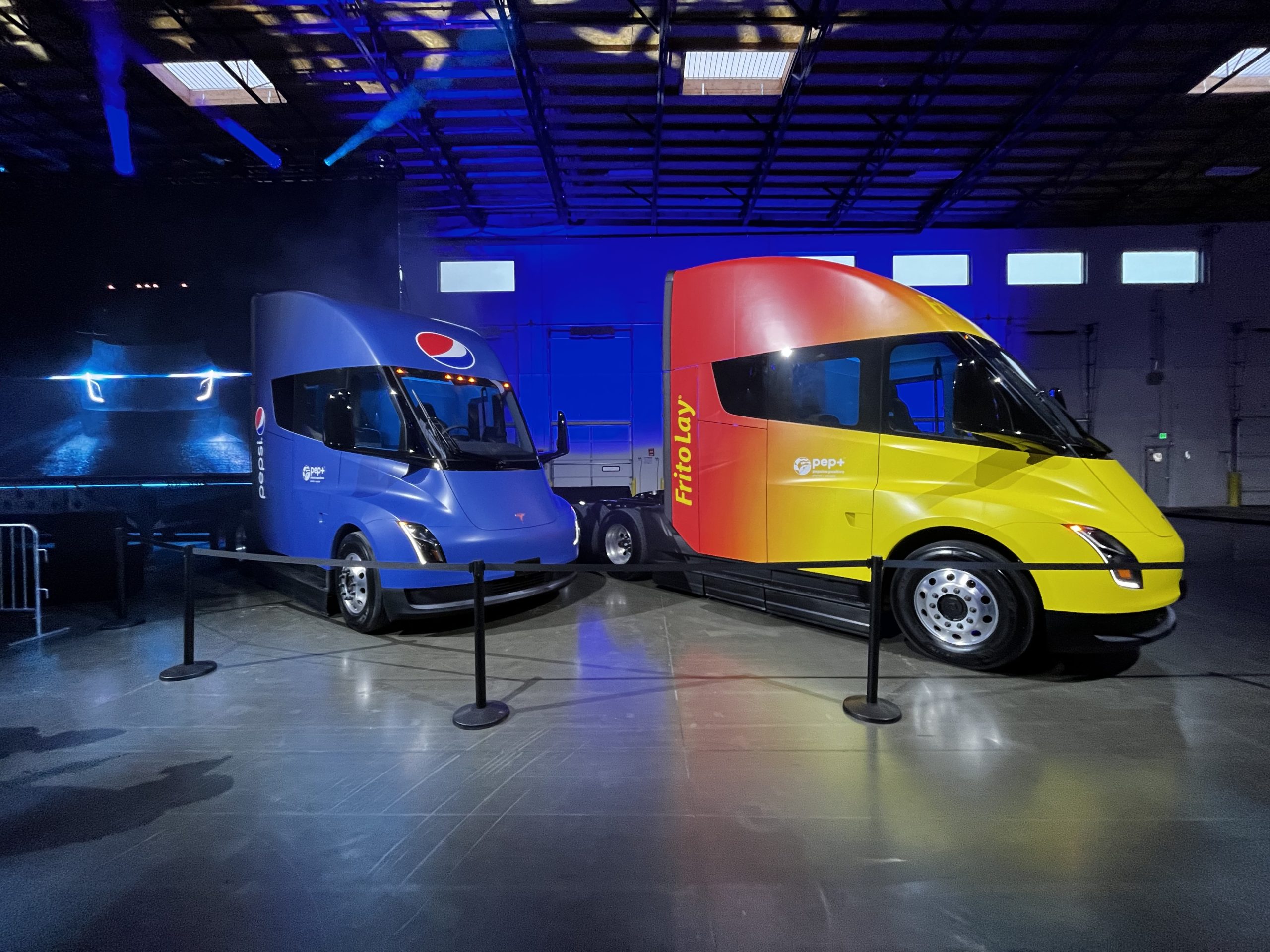
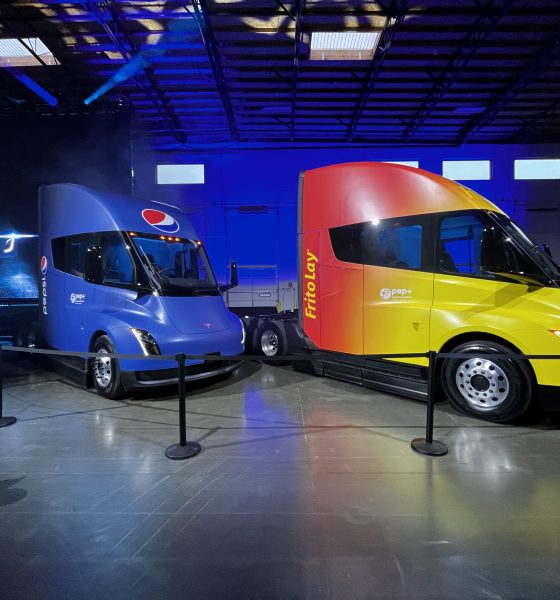
News
Tesla Semi First Delivery News Roundup [Live Coverage]
Tesla just kicked off the Semi’s first delivery event! It took some time, but the Tesla Semi is officially hitting the road.
Teslarati will be closely covering the Tesla Semi first delivery event so stay tuned. If you didn’t get an invite, you can still join the festivities online. The link to the Tesla Semi’s first delivery event is below.




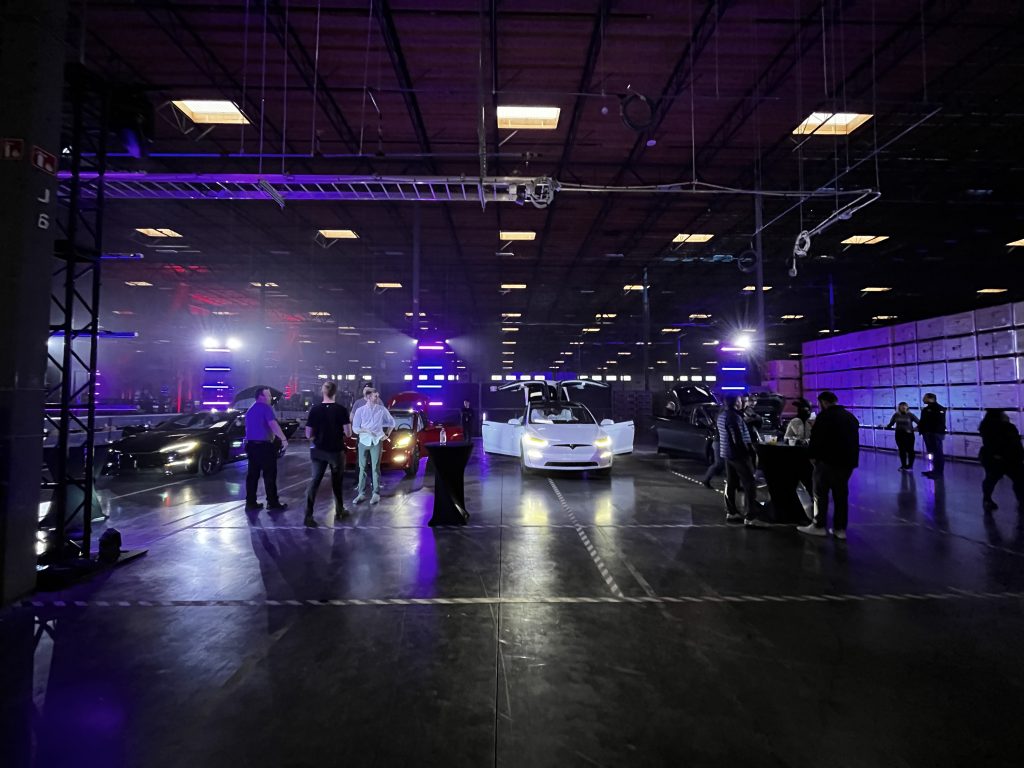
Pre-Event Displays and Observations
Guests are slowly making their way throughout the event, taking photos of all the displays Tesla has prepared for them. Tesla will be using the Semi’s trailer bed as the stage of the event.
Tesla just tweeted about the event and shared the link to its livestream, signaling that it will start very soon. Now people can watch the event right on Twitter. People are already gathering in front of the stage.
Tesla Semi First Delivery Event Presentation
ELon Musk has arrived inside a Tesla Semi.
“I can’t believe its been five years,” Elon Musk said. “We’re excited to release our first production Tesla Semi trucks.”
Musk noted that the event is taking place right next to Tesla Giga Nevada where the Semi’s drive units and other parts are made. Guests were given the chance to tour the Tesla Semi production line before the event.
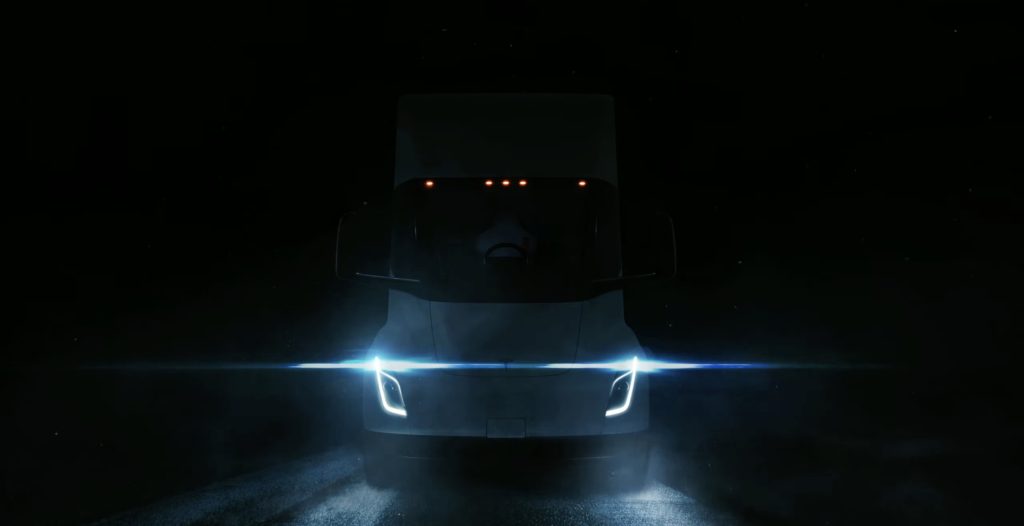
Why build the Tesla Semi?
Musk further explains that Tesla is producing a variety of vehicles to accomplish its main goal: to bring about the advent of sustainable energy. He noted that the Tesla Semi production was critical to the company’s mission. He explained that Class 8 trucks make up only 1% of vehicles in the United States, but contributes 20% of U.S. vehicle emissions and 36% of U.S. vehicle particulate emissions.
“At Tesla we don’t make slow cars. This thing has crazy power relative to a diesel truck,” Musk said.
The Tesla Semi: It’s a Beast
The Tesla Semi has 3x the power than other diesel trucks on the road. It has a 1000 volt powertrain, uses Tesla’s innovative heat pump system, and infotainment system as well. The Semi is essentially using the Plaid’s powertrain. It’s equipped with a tri-motor powertrain, delivering a smooth driving experience–both in terms of acceleration and deceleration. It weighs 82,000 pounds.
“I find it amazing that this enormous thing can be powered by something you can carry in your hand,” commented Elon Musk.
Regenerative braking and the Semi’s traction control make truck driving safer and more efficient. On November 25, the Tesla Semi drove 500 miles without charging during the drive. The Semi is shaped like a bullet, making it more aerodynamic.
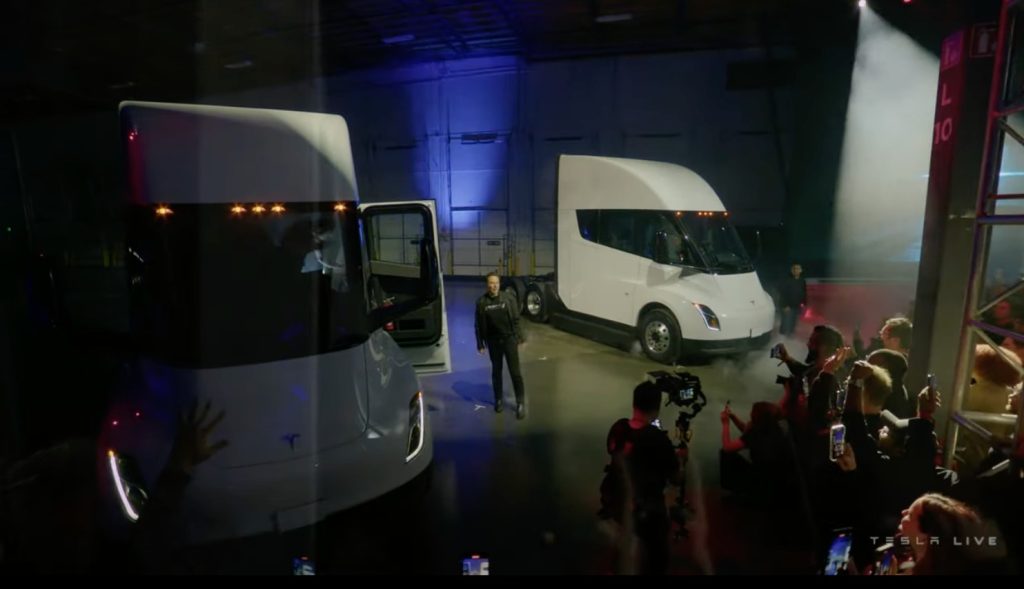
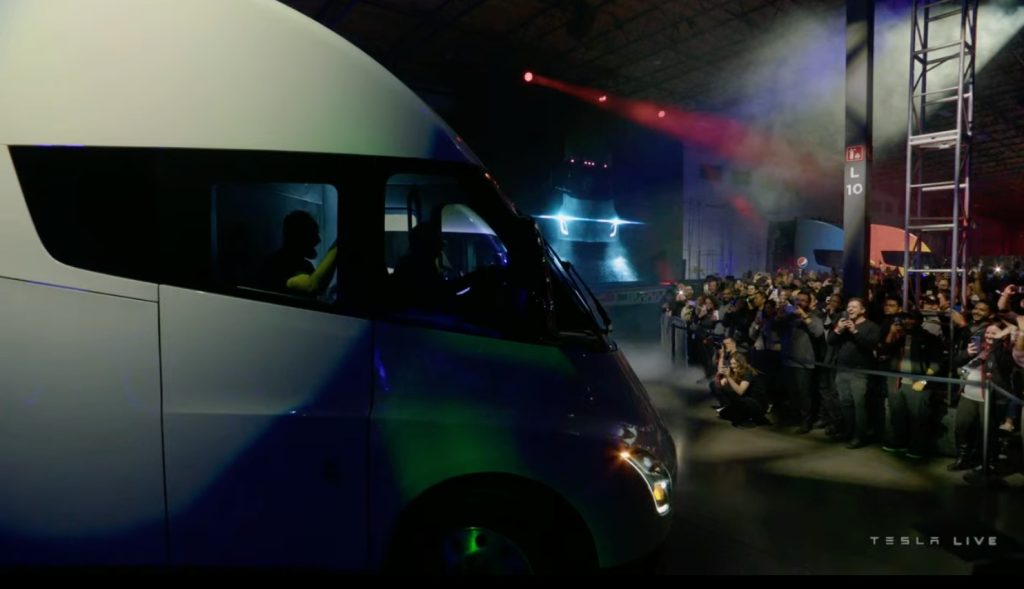
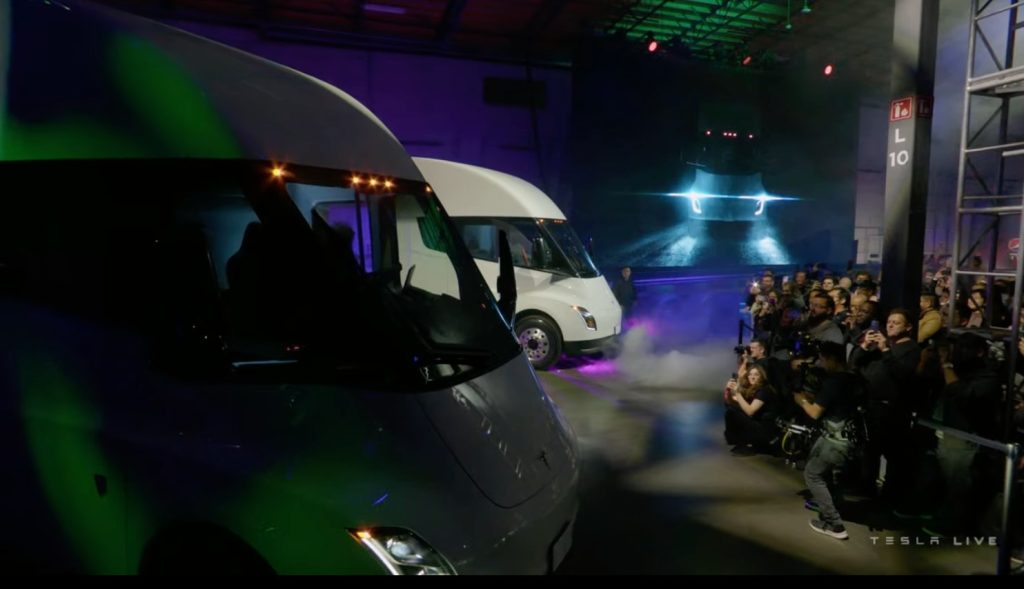
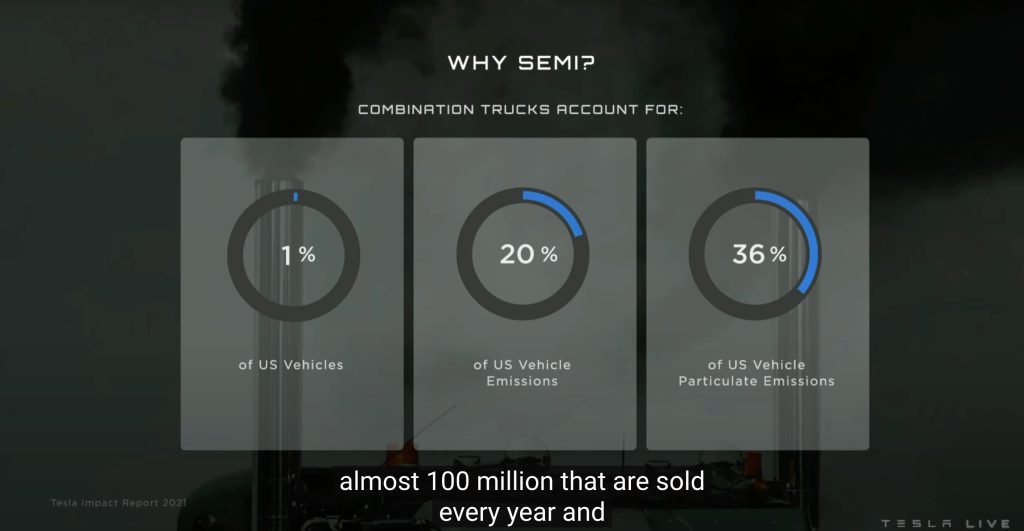
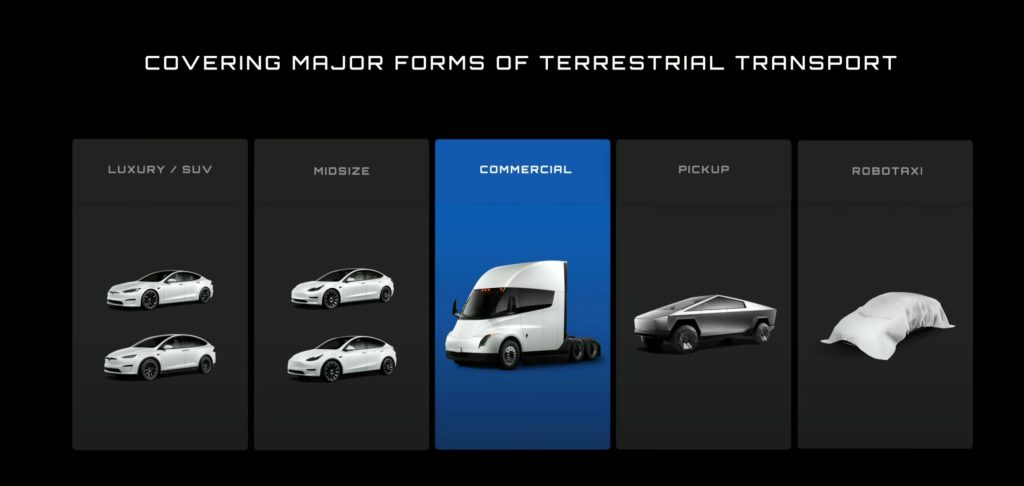

The Tesla Semi also is built with the driver in mind. There’s a wireless charging pad for their phones, ports for their wires, plenty of space, and enough cargo space.
The company has tested the Semi throughout all kinds of weather, testing its durability. Tesla also developed a MW charger to charge the Semi which will also be used for the Cybertruck. The MW charger will be coming to the Supercharger Network.
Tesla will be using the Semi in its own factories, showing the confidence it has in the Class 8 truck. By using the trucks, Tesla will also be closing its feedback loop, which will help the company improve the Semi moving forward.
PepsiCo and the Tesla Semi
Pepsi representatives thanks Tesla, especially the people for working hard on the Semi. Pepsi also had a surprise for guests at the event, providing snacks from everyone–delivered by the Tesla Semi, of course.
And that’s a wrap. Hope you enjoyed our coverage and join us again for the next big Tesla event!

Elon Musk
Elon Musk and Tesla AI Director share insights after empty driver seat Robotaxi rides
The executives’ unoccupied tests hint at the rapid progress of Tesla’s unsupervised Robotaxi efforts.

Tesla CEO Elon Musk and AI Director Ashok Elluswamy celebrated Christmas Eve by sharing personal experiences with Robotaxi vehicles that had no safety monitor or occupant in the driver’s seat. Musk described the system’s “perfect driving” around Austin, while Elluswamy posted video from the back seat, calling it “an amazing experience.”
The executives’ unoccupied tests hint at the rapid progress of Tesla’s unsupervised Robotaxi efforts.
Elon and Ashok’s firsthand Robotaxi insights
Prior to Musk and the Tesla AI Director’s posts, sightings of unmanned Teslas navigating public roads were widely shared on social media. One such vehicle was spotted in Austin, Texas, which Elon Musk acknowleged by stating that “Testing is underway with no occupants in the car.”
Based on his Christmas Eve post, Musk seemed to have tested an unmanned Tesla himself. “A Tesla with no safety monitor in the car and me sitting in the passenger seat took me all around Austin on Sunday with perfect driving,” Musk wrote in his post.
Elluswamy responded with a 2-minute video showing himself in the rear of an unmanned Tesla. The video featured the vehicle’s empty front seats, as well as its smooth handling through real-world traffic. He captioned his video with the words, “It’s an amazing experience!”
Towards Unsupervised operations
During an xAI Hackathon earlier this month, Elon Musk mentioned that Tesla owed be removing Safety Monitors from its Robotaxis in Austin in just three weeks. “Unsupervised is pretty much solved at this point. So there will be Tesla Robotaxis operating in Austin with no one in them. Not even anyone in the passenger seat in about three weeks,” he said. Musk echoed similar estimates at the 2025 Annual Shareholder Meeting and the Q3 2025 earnings call.
Considering the insights that were posted Musk and Elluswamy, it does appear that Tesla is working hard towards operating its Robotaxis with no safety monitors. This is quite impressive considering that the service was launched just earlier this year.
Elon Musk
Starlink passes 9 million active customers just weeks after hitting 8 million
The milestone highlights the accelerating growth of Starlink, which has now been adding over 20,000 new users per day.

SpaceX’s Starlink satellite internet service has continued its rapid global expansion, surpassing 9 million active customers just weeks after crossing the 8 million mark.
The milestone highlights the accelerating growth of Starlink, which has now been adding over 20,000 new users per day.
9 million customers
In a post on X, SpaceX stated that Starlink now serves over 9 million active users across 155 countries, territories, and markets. The company reached 8 million customers in early November, meaning it added roughly 1 million subscribers in under seven weeks, or about 21,275 new users on average per day.
“Starlink is connecting more than 9M active customers with high-speed internet across 155 countries, territories, and many other markets,” Starlink wrote in a post on its official X account. SpaceX President Gwynne Shotwell also celebrated the milestone on X. “A huge thank you to all of our customers and congrats to the Starlink team for such an incredible product,” she wrote.
That growth rate reflects both rising demand for broadband in underserved regions and Starlink’s expanding satellite constellation, which now includes more than 9,000 low-Earth-orbit satellites designed to deliver high-speed, low-latency internet worldwide.
Starlink’s momentum
Starlink’s momentum has been building up. SpaceX reported 4.6 million Starlink customers in December 2024, followed by 7 million by August 2025, and 8 million customers in November. Independent data also suggests Starlink usage is rising sharply, with Cloudflare reporting that global web traffic from Starlink users more than doubled in 2025, as noted in an Insider report.
Starlink’s momentum is increasingly tied to SpaceX’s broader financial outlook. Elon Musk has said the satellite network is “by far” the company’s largest revenue driver, and reports suggest SpaceX may be positioning itself for an initial public offering as soon as next year, with valuations estimated as high as $1.5 trillion. Musk has also suggested in the past that Starlink could have its own IPO in the future.
News
NVIDIA Director of Robotics: Tesla FSD v14 is the first AI to pass the “Physical Turing Test”
After testing FSD v14, Fan stated that his experience with FSD felt magical at first, but it soon started to feel like a routine.

NVIDIA Director of Robotics Jim Fan has praised Tesla’s Full Self-Driving (Supervised) v14 as the first AI to pass what he described as a “Physical Turing Test.”
After testing FSD v14, Fan stated that his experience with FSD felt magical at first, but it soon started to feel like a routine. And just like smartphones today, removing it now would “actively hurt.”
Jim Fan’s hands-on FSD v14 impressions
Fan, a leading researcher in embodied AI who is currently solving Physical AI at NVIDIA and spearheading the company’s Project GR00T initiative, noted that he actually was late to the Tesla game. He was, however, one of the first to try out FSD v14.
“I was very late to own a Tesla but among the earliest to try out FSD v14. It’s perhaps the first time I experience an AI that passes the Physical Turing Test: after a long day at work, you press a button, lay back, and couldn’t tell if a neural net or a human drove you home,” Fan wrote in a post on X.
Fan added: “Despite knowing exactly how robot learning works, I still find it magical watching the steering wheel turn by itself. First it feels surreal, next it becomes routine. Then, like the smartphone, taking it away actively hurts. This is how humanity gets rewired and glued to god-like technologies.”
The Physical Turing Test
The original Turing Test was conceived by Alan Turing in 1950, and it was aimed at determining if a machine could exhibit behavior that is equivalent to or indistinguishable from a human. By focusing on text-based conversations, the original Turing Test set a high bar for natural language processing and machine learning.
This test has been passed by today’s large language models. However, the capability to converse in a humanlike manner is a completely different challenge from performing real-world problem-solving or physical interactions. Thus, Fan introduced the Physical Turing Test, which challenges AI systems to demonstrate intelligence through physical actions.
Based on Fan’s comments, Tesla has demonstrated these intelligent physical actions with FSD v14. Elon Musk agreed with the NVIDIA executive, stating in a post on X that with FSD v14, “you can sense the sentience maturing.” Musk also praised Tesla AI, calling it the best “real-world AI” today.








